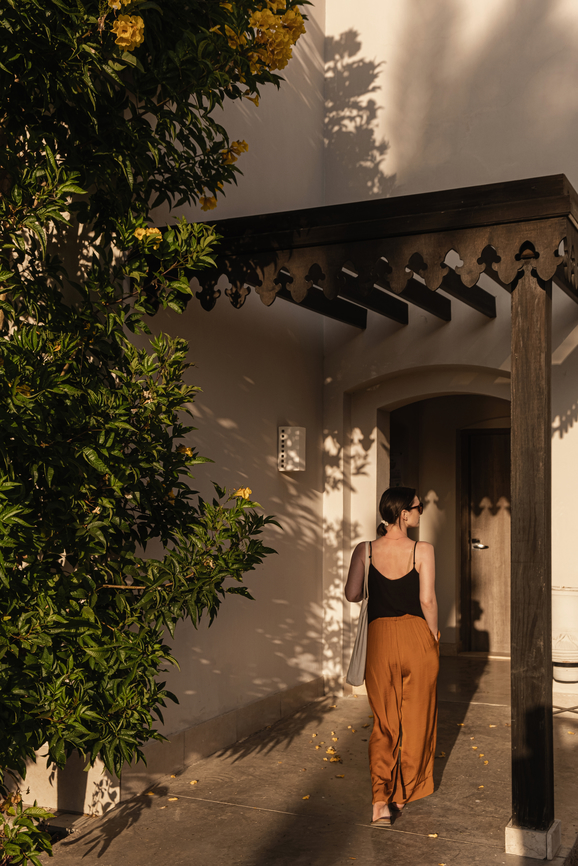
Why ‘Awe Walks’ Are The New Mental Health Walks
When was the last time you felt ‘awe-struck’? Experienced something with pure wonder?
“In a world driven by productivity, efficiency, and output, the softer parts of life tend to escape our notice.”
As a creativity and psychology researcher and the co-founder of a mental health startup helping all adults turn creativity into an active part of daily life, I know how difficult it can be to get off life’s hamster wheel. But there are accessible practices to activate your naturally creative brain and, as a result, experience moments of awe, wonder, and transcendence more often.
If you’re racking your brain for a memory, you’re not alone. In a world driven by productivity, efficiency, and output, the softer parts of life tend to escape our notice. But, unlike you might think, awe and wonder aren’t emotions that can only be experienced on a blissful mountaintop or far away from technology. In fact, proactively incorporating moments of awe into our lives more regularly is the basis for expanding our creativity, compassion, and overall mental health.
First, let’s unpack the science behind why this matters.
The science behind the softer parts of life
Amidst all the struggles in our world, why would we try to make more space for our creative health? Don’t emotions like awe and wonder seem nice to experience, but maybe also frivolous or inaccessible?
As a society, we’ve been taught that the top of Maslow’s hierarchy, like transcendence and fulfillment, is only for the lucky few. But scientists like myself have been studying these aspects of life for decades now and have found that these elements of our well-being aren’t frivolous at all; they help us feel most alive.
“Our human capacity for imagination, wonder, curiosity, awe, and fulfillment allows us to thrive and combats the ills of modern society like burnout and stress.”
At my startup Daydreamers, we’ve devised a catch-all phrase to capture these parts of our well-being we often overlook: Creative Health. Our human capacity for imagination, wonder, curiosity, awe, and fulfillment allows us to thrive and combats the ills of modern society like burnout and stress.
Let’s take awe, for example. Scientific research defines it as “the feeling we get in the presence of vast things not immediately understood.” It’s the full-body chills you get when looking at a piece of artwork you can’t believe is real. It’s the moment when you laugh at the most mundane but beautiful experience with someone you love. It’s even the tears you quickly wipe away when you watch a feel-good TikTok.
“When we experience these softer parts of life, our attention moves away from our own internal chatter and towards the world around us.”
A study out of Berkeley’s Greater Good Center found that adults who proactively looked for awe reduced their stress levels and felt more connected to their communities and the world. That’s because when we experience these softer parts of life, our attention moves away from our own internal chatter and towards the world around us. And when we’re creatively healthy, it doesn’t just feel good; it impacts nearly all areas of our lives.
Even more, making space to experience awe and wonder proactively strengthens our neuroplasticity. It helps us become more open to new ideas and experiences. Allowing ourselves to think creatively develops new pathways in our brains, expanding our sense of time, self, and possibility.
How to activate your creative brain in the wild: Awe Walks
If all this sounds great in theory but always falls to the bottom of your to-do list, you’re not alone. Enter the most accessible, enjoyable way to expand your creative brain, no matter where you are: Awe Walks.
Awe Walks was a concept first coined by scientific researchers in collaboration with the Memory and Aging Center at U.C.S.F. They already knew how powerful awe could be for our sense of well-being, connection, and purpose, but studies still needed to look at how to actively incorporate it into everyday life.
The results were astounding. Not only did those who went on 15-minute Awe Walks feel happier, they “got out of their heads,” felt more interconnected with the world around them, and even had bigger smiles than those in the control group. How cool is that?
“The basis of Awe Walks is simple: instead of tuning out your environment by scrolling on your phone or listening to a podcast, proactively take in your surroundings.”
The basis of Awe Walks is simple: instead of tuning out your environment by scrolling on your phone or listening to a podcast, proactively take in your surroundings. You might notice the sights, sounds, smells, and situations around you. You may even experiment with taking a route you’ve never taken before, even if it’s just around the corner. Most importantly, try not to use your phone. That’s because to restore and rejuvenate our minds, we have to give ourselves time and space to meander.
When we combine spending time in fresh air, savoring the beauty around us, and intentionally opening ourselves to new experiences, we rejuvenate our creativity and mental health.
At Daydreamers, our members have been expanding their own perception of creativity by going on Awe Walks over the past few months, and it’s been world-changing. They’ve reduced their feelings of burnout by over 60% and increased their sense of resilience, enjoyment, and interconnectedness with the world around them.
“People who find awe all around them are more open to new ideas. To what is unknown. To what language can’t describe.”
Dr. Dacher Keltner
And it works the opposite way, too. The more we practice creative thinking, the more likely we will experience awe. Dr. Keltner, the leading researcher on awe’s impact on our well-being, notes: “People who find awe all around them are more open to new ideas. To what is unknown. To what language can’t describe.”
Remember that Awe Walks don’t need to be complicated. You don’t need to live in a beautiful place or go for extended periods; they can happen in the most mundane moments. In the study by U.C.S.F researchers, participants only went on an Awe Walk for 15 minutes in their regular neighborhoods. That’s because the basis for experiencing Awe Walks requires two important factors: novelty and vastness. All that means is seeing something with new eyes and getting outside––it doesn’t matter where.
So, experiment with this simple practice: Leave your phone at home and take yourself on a quick Awe Walk. What’s the worst that can happen? It’ll likely leave you feeling more inspired, connected, and curious.
It may even send your brain on a positiveupwardspiral.
Katina Bajaj is the cofounder and Chief Wellbeing Officer of Daydreamers. Katina is a published wellbeing author and has an MA in Clinical Psychology from Columbia’s Mind-Body Institute. You can find her on Tiktok and join Daydreamers Early Access here.



